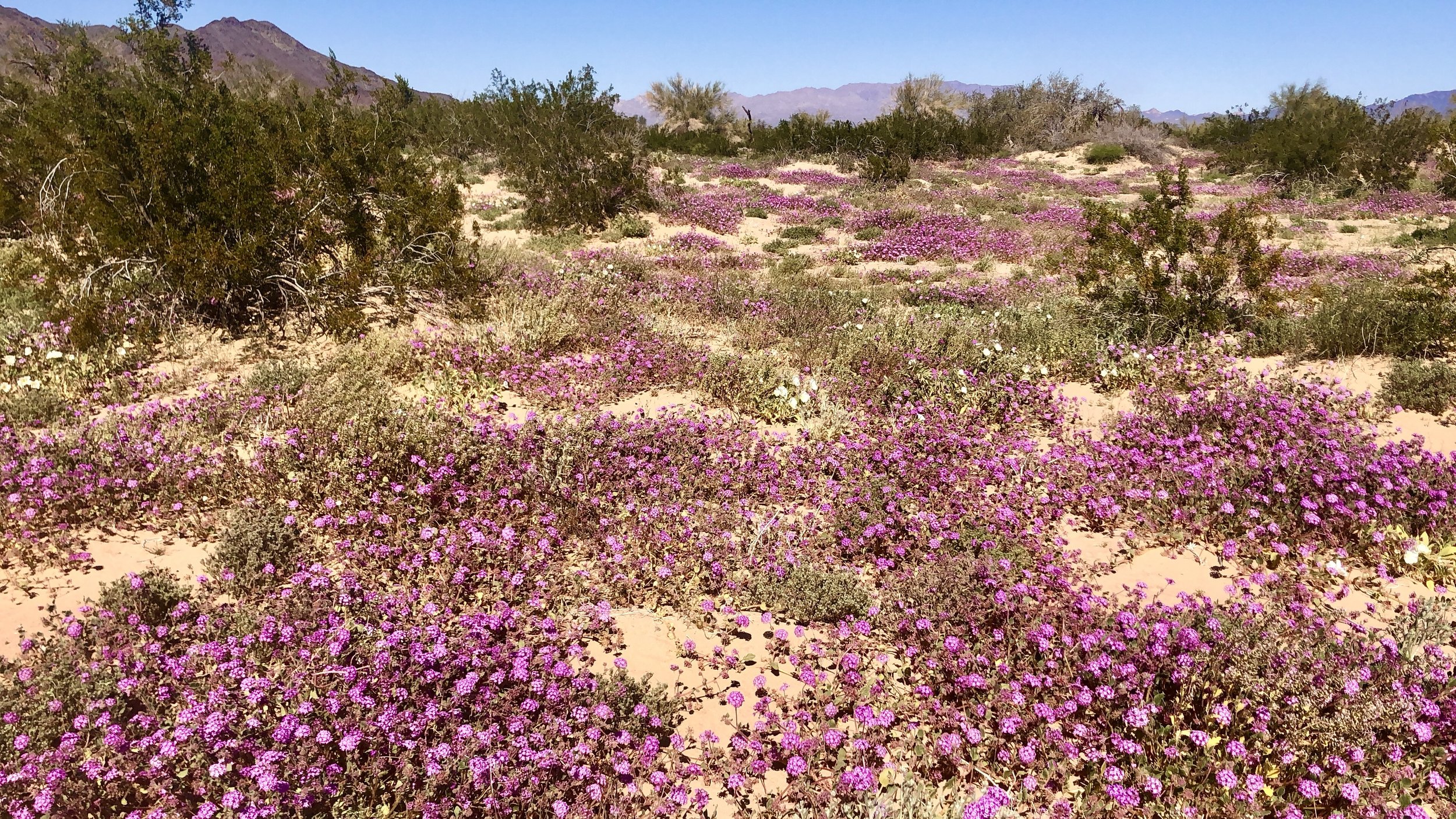Anatomy of a superbloom
Learn what sets the stage for superblooms and how to witness this phenomenon responsibly.
By Corina Godoy, MDLT Seed Collections Manager
Desert sand verbena — Photographed by Emmalyn Snead
What is a superbloom?
A superbloom is loosely defined as a rare occurrence in which an abundance of desert wildflowers blossom at the same time. They rely on many unpredictable factors in order to come alive, a wet winter being just one contributor to this incredible botanical event.
For flowers to bloom in the spring, native plants must survive years of drought, herbivory, and habitat disturbance. They will also need to overcome obstacles brought on by climate change, such as plant-pollinator temporal mismatch, in which earlier higher temperatures signal plants to bloom before their pollinator has emerged for the season. High temperatures and drought conditions can also lead to lean years where the established vegetation only produces minimal foliage, leaving herbivores to rely on vulnerable emerging seedlings for food.
In ideal conditions, a plant will bloom at the same time that its pollinator is active, and through pollination the flower will be fertilized and produce seed. Afterwards, that seed will enter the seed bank — the soil — sometimes waiting years for the right conditions to germinate. Meanwhile, it is susceptible to predation from granivores, viability loss, and rot.
Emmalyn Snead
Temperature can also create complications. The rise in temperature must be gradual enough to give seedlings a chance to establish themselves without drying up or freezing from a sudden temperature shift. Climate change makes this delicate transition less reliable as we experience new extremes each year.
Although it is a treacherous path with unrelenting foes, the seeds forge forward until the day comes where they can celebrate the desert in a parade of colors. The flowers are welcomed gleefully by an equally diverse array of insects who are dependent on their pollen and nectar. The symphony of the desert comes to a crescendo in a triumphant harmony that glows and buzzes.
Emmalyn Snead
Superbloom etiquette
These incredible displays draw innumerable spectators. However, increased human traffic puts wildflowers and the wildlife that rely on them at risk.
Veering off-trail encourages more foot traffic and leads to soil disturbance. It also risks tracking non-native seeds into new areas, creating grounds for invasive plants to establish and outcompete native plants, all of which causes the seed bank and the genetic pool of these vegetative communities to suffer.
To minimize or avoid impacts to native plant populations, stay on established trails and roads. Avoid picking and sitting in or lying in the flowers. View flowers from a respectful distance to give plants the opportunity to fully develop, interact with their pollinators, and contribute their seed to the seed bank. Remember, it takes a superbloom to make a superbloom, and harm inflicted now will manifest in fewer superblooms and smaller wildflower displays for years to come.
Make a virtual tour using live cameras and satellite imagery.
Support wildflowers!
Think about how you can give back to the superbloom. Can you volunteer for a nonprofit or get involved by weeding to remove invasive species?
Follow superbloom etiquette year-round.
Educate others about the value of protecting wildflower habitats.
Donate to the Mojave Desert Seed Bank. This facility at MDLT is an insurance policy for the Mojave Desert. Supporting the seed bank is a direct link to the conservation of these species.
Plant native plants. MDLT’s next native plant sale is in fall 2023. You can also buy seed packets from our shop.
Learn more about native plants at the Mojave Desert Discovery Garden.




